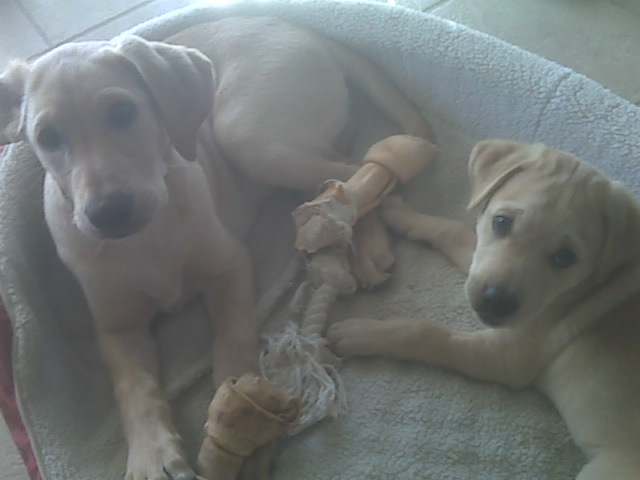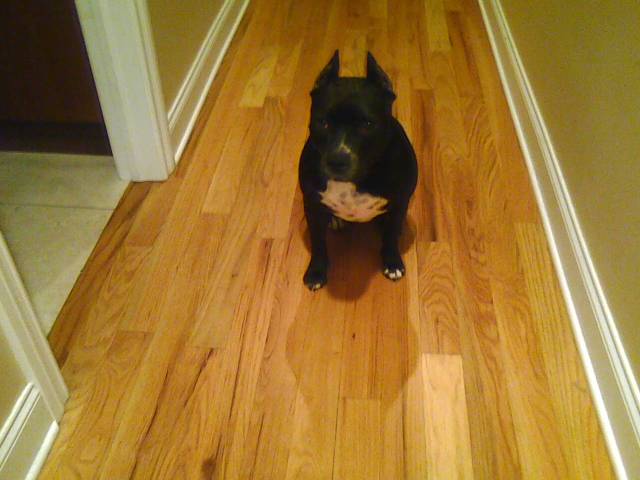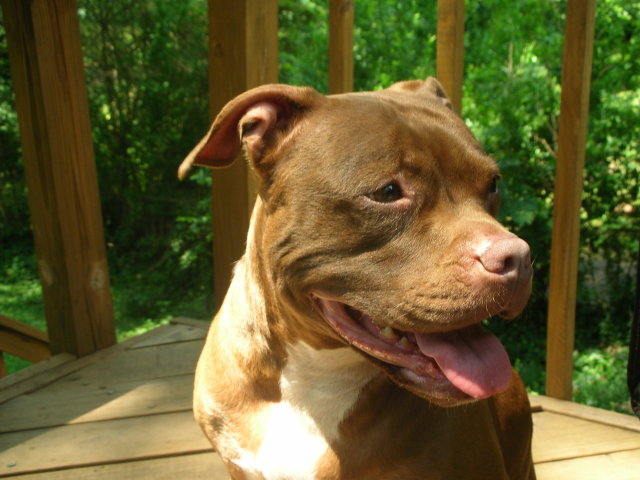Questionwhen i call my chihuahau he tucks his tail and pees while coming to me just the other day he was sitting on my pillow and i reached for him and he peed on the pillow.why is my chihuahua so fearful.he is all so fearful of other people that dont live with me. he also has a problem when i take him out side and when its time to come in and i call him he dosent come.
AnswerMany dogs eventually outgrow it, but you can reduce it by building the dog's confidence up. Start with obedience training. The key to most behavior problems is approaching things using the dog's natural instincts. Dogs see all the people and dogs in the household as a pack with each having their own rank in the pack and a top dog. Life is much easier if the 2 legged pack members outrank the 4 legged ones. You can learn to play the role of top dog by reading some books or going to a good obedience class. A good obedience class or book is about you being top dog, not about rewarding standard commands with a treat. Start at http://www.dogsbestfriend.com/ As you praise the dog for following your commands, it will build its confidence.
Play tug of war with the dog and lose. However at the end of the game, take the rope or toy and put it up, less the dog becomes confused about who is top dog.
Ropes from the pets' store quickly turn to hazardous shreds. Ones I made
lasted much better. Go to a hardware or home center that sells rope by the
foot. Buy 2' of 3/4" poly rope. Melt the ends, and tie knots in it. Get
them as tight as possible, put it in a vise and pound it with a hammer. Watch
carefully, and be ready to discard when it comes apart.
Finally, make sure it has a den to live in. If you are not using a crate, buy one. The dog may be happier in its den than loose in the house. It relaxes, it feels safe in its den. It rests, the body slows down reducing the need for water and relieving its self. Dogs that have been crated all along do very well. Many of them will rest in their crates even when the door is open. I think the plastic
ones give the dog more of a safe, enclosed den feeling. Metal ones can be put
in a corner or covered with something the dog can't pull in and chew. Select
a crate just big enough for the full grown dog to stretch out in.
A dog that has not been crated since it was little, may take some work.
Start out just putting its toys and treats in the crate. Praise it for going
in. Feed it in the crate. This is also an easy way to maintain order at
feeding time for more than one dog.
The obedience training should help with come too.
"Come" needs to be taught as part of proper pack status and obedience.
If you dog is at least 4 - 5 months old, start with a good 6' leather leash and
a sturdy slip collar, the metal chain ones with the rings on each end. You want the shortest one that will go on and off easily. If you walk with the dog on the left, pull the chain through one loop forming a "P". Facing it, slip it over its head. The free end should come over the neck to the leash, and the other end should drop slack when there is no pull on the leash. Before 4 months use a conventional flat collar to protect the tender young neck.
With the dog at the end of the leash, call its name and "Come" in a firm
voice. If it comes, praise it lavishly and pet it. If it doesn't come, repeat
the command and give the leash a light snap. Keep it up with firmer leash snaps
until the dog does come. Do not forget the praise. Then switch to a longer
leash or rope, about 25'. When it comes well on the longer leash, you should
be able to go to off leash in a fenced area, etc. Once the dog is doing well, introduce come, treat. This is for emergencies only when the dog has gotten loose accidentally. Use it routinely and you will have nothing to fall back on when your dog is headed for a busy street. "Name, come treat!" is little different from the regular "Name, come!", except the dog gets a great treat when it comes. We are talking a hot dog, cheese, etc. much better than any treat you use routinely.
Relying on come to control most dogs loose outside is risky, and I do not
recommend it. Dogs are individuals. Some can be trained to come when you have
no way to enforce it, but some will never be completely reliable even for the
most experienced trainers.
Consider fencing the yard, either a conventional fence or the electronic ones.
A tether is fine for short relief breaks with exercise coming from long walks
on leash or in controlled areas like a dog park.

 Proper diet for our Shitzus
Question
the two puppies (left)
Dear Patti;
I was nearl
Proper diet for our Shitzus
Question
the two puppies (left)
Dear Patti;
I was nearl
 2 puppies one lab the other lab/shepherd mix
Question
Bailey ( female lab) a
I have a 3 1/2 month ol
2 puppies one lab the other lab/shepherd mix
Question
Bailey ( female lab) a
I have a 3 1/2 month ol
 chihuahua pees on bed
Questionme and boo
QUESTION: I have a 9 month ol
chihuahua pees on bed
Questionme and boo
QUESTION: I have a 9 month ol
 AmStaff Terrier
QuestionMy dog
QUESTION: I have a 2 1/2 year old
AmStaff Terrier
QuestionMy dog
QUESTION: I have a 2 1/2 year old
 Coping with Incontinence
Question
Abi
Abi, my 8 year old female spayed pit bull,
Coping with Incontinence
Question
Abi
Abi, my 8 year old female spayed pit bull,